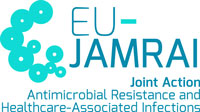Step by step guide for the implementation and assessment of Seminars
Seminars are structured educational gatherings, typically led by one or more subject matter experts, designed for the dissemination of specialized knowledge, presentation of current research findings (e.g., local AMR data, new treatment guidelines), and to stimulate critical thinking and discussion on specific AMR/AMS topics. While traditionally centered on formal presentations, contemporary best practices indicate that Seminars are most effective when they form part of a multifaceted educational program and incorporate interactive elements to enhance learner engagement and knowledge retention, moving beyond purely passive didactic methods.

Planning a Seminars
The following steps should be taken into consideration when planning a seminar on AMR/AMS:
- Needs Assessment and Objective Setting: Clearly define the specific learning objectives based on identified knowledge gaps or educational needs of the target audience (e.g., prescribers, researchers, policymakers). This could involve reviewing local AMR challenges or new guideline introductions.
- Content Development and Speaker Selection: Curate evidence-based, relevant, and up-to-date content. Secure credible and engaging expert speaker(s) with recognized expertise in the seminar’s specific AMR/AMS focus. (Pulcini and Gyssens, 2013, discusses the variety of disciplines needed for comprehensive AMR education).
- Format Design and Interactivity: Structure the seminar with a clear agenda. While including expert presentations, integrate interactive components such as dedicated Q&A periods, panel discussions, audience polling, or brief, illustrative case-based discussions to foster active participation and deeper processing of information. (Interactive techniques are highlighted as more effective in Satterfield et al. (2020) and exemplified in the multi-session “workshop/seminar” approach of Jha et al. (2020) and Mittal et al. (2023). Seminars can be one-time events or part of a recurrent series for ongoing education (Satterfield et al., 2020).
- Material Preparation: Develop and provide concise supporting materials, which may include pre-reading suggestions to prepare participants, presentation slides, summaries of key guidelines or research, and links to further resources for post-seminar learning.
- Delivery and Skilled Facilitation: Ensure clear and engaging delivery of presentations. A skilled facilitator (who may or may not be the primary speaker) is crucial for managing time, moderating interactive segments effectively, encouraging diverse participation, and ensuring a conducive learning environment.
- Post-Seminar Follow-up: Disseminate presentation materials, answer pending questions, and potentially link the seminar to subsequent, more applied learning opportunities like Workshops or online community discussions to reinforce learning and promote application.
Facilitator’s role:
(If distinct from the speaker) Introduce the topic and speaker(s) credibly, clearly articulate the seminar’s objectives, manage the agenda and time efficiently, stimulate and expertly moderate discussions and Q&A sessions, ensure an inclusive and conducive learning atmosphere, and synthesize key takeaways.
Speaker’s role: Deliver expert-level content in an accessible, engaging, and clear manner; effectively use teaching aids; respond thoughtfully to audience questions; and stimulate critical reflection on the topic.
Participant’s role: Prepare by reviewing any pre-seminar materials, engage actively by listening critically, process the information presented, formulate insightful questions, contribute thoughtfully to discussions, and reflect on how the information applies to their professional context and practice concerning AMR/AMS.

Defining roles in a Seminars
Facilitator’s role:
- (If distinct from the speaker) Introduce the topic and speaker(s) credibly, clearly articulate the seminar’s objectives, manage the agenda and time efficiently, stimulate and expertly moderate discussions and Q&A sessions, ensure an inclusive and conducive learning atmosphere, and synthesize key takeaways.
- Speaker’s role: Deliver expert-level content in an accessible, engaging, and clear manner; effectively use teaching aids; respond thoughtfully to audience questions; and stimulate critical reflection on the topic.
Participant’s role: Prepare by reviewing any pre-seminar materials, engage actively by listening critically, process the information presented, formulate insightful questions, contribute thoughtfully to discussions, and reflect on how the information applies to their professional context and practice concerning AMR/AMS.

Assessing a Seminars
Methods
- Pre- and post-seminar assessments (e.g., questionnaires, quizzes) to measure changes in knowledge, and potentially attitudes or confidence regarding the specific AMR/AMS topics covered. (As demonstrated by Jha et al. (2020) and Mittal et al. (2023).
- Interactive polling or short Q&A during the seminar to gauge immediate understanding and engagement.
- Collection of participant feedback via structured evaluation forms focusing on content clarity, relevance, speaker effectiveness, achievement of learning objectives, and overall satisfaction.
- Analysis of questions asked and the nature of discussions to gauge depth of engagement and areas needing further clarification.
- If linked to broader interventions, longer-term follow-up could assess behavioral changes or application of knowledge (e.g., changes in prescribing patterns, policy development). (Satterfield et al.,2020, suggest educational interventions for prescribers should support larger ASP interventions and include feedback/reinforcement).
Tools
Standardized or custom-developed knowledge questionnaires, online polling tools, anonymous feedback surveys (paper-based or digital), rubrics for analyzing discussion quality (if applicable), reflective prompts for participants.

Suggested Seminars prototype
Target Audience: Prescribers (Doctors, Veterinarians, Dentists), Clinical Profiles (e.g., nurses, pharmacists), Health Managers.
Learning Objectives:
- Enhance understanding of current evidence-based guidelines for empirical antibiotic treatment in sepsis.
- Improve ability to balance rapid antibiotic administration with diagnostic stewardship in suspected sepsis.
- Discuss strategies for de-escalation and optimization of antimicrobial therapy in sepsis once more diagnostic information is available.
- Identify common pitfalls in sepsis management related to antimicrobial use.
Curriculum/Activities:
- An expert-led presentation (e.g., by an Infectious Diseases specialist or Intensivist) covering the latest sepsis guidelines, local resistance patterns impacting empirical choices, and the role of rapid diagnostics.
- Incorporation of short, interactive case vignettes throughout the presentation where participants vote on initial management steps using an audience response system.
- A dedicated segment for discussing challenging local cases or common dilemmas submitted anonymously by participants beforehand.
- A panel discussion with a microbiologist and a clinical pharmacist to address interprofessional aspects of sepsis care and AMS.
- Provision of pocket guidelines, key articles, and links to online decision-support tools post-seminar.
Evaluation of the Prototype’s Effectiveness:
- Pre- and post-seminar knowledge quiz focusing on guideline recommendations and appropriate diagnostic workup.
- Analysis of audience responses to in-seminar polls and case discussions.
- Participant feedback forms rating the clarity of information, relevance to practice, and effectiveness of the interactive components.
- If part of a hospital-wide initiative, audit data on time-to-antibiotics, appropriateness of empirical choices, and de-escalation rates for sepsis could be monitored before and after a series of such seminars (Kirkpatrick Levels 3 and 4).
References
- Dik, J.-W. H., Friedrich, A. W., Nathwani, D., & Sinha, B. (2017). Combating the Complex Global Challenge of Antimicrobial Resistance: What Can Antimicrobial Stewardship Contribute? Infectious Disease Reports, 9(1), 7158. https://doi.org/10.4081/idr.2017.7158
- Khadse, S. N., Ugemuge, S., & Singh, C. (2023). Impact of Antimicrobial Stewardship on Reducing Antimicrobial Resistance. Cureus, 15(12), e49935. https://doi.org/10.7759/cureus.49935
- Mittal, N., Deswal, H., Mittal, R., Sharma, S., & Kaushik, P. (2023). An educational program on antimicrobial resistance and stewardship for staff nurses in a public tertiary care hospital in India. Infection, Disease & Health, 28(3), 202–210. https://doi.org/10.1016/j.idh.2023.03.003
- Rocha-Pereira, N., Castro Sanchez, E., & Nathwani, D. (2017). How Can Multi-Professional Education Support Better Stewardship? Infectious Disease Reports, 9(1), 6917. https://doi.org/10.4081/idr.2017.6917
- Rocha-Pereira, N., Lafferty, N., & Nathwani, D. (2015). Educating healthcare professionals in antimicrobial stewardship: can online-learning solutions help? Journal of Antimicrobial Chemotherapy, 70(12), 3175–3177. https://doi.org/10.1093/jac/dkv336
- Rogers Van Katwyk, S., Jones, S. L., & Hoffman, S. J. (2018). Mapping educational opportunities for healthcare workers on antimicrobial resistance and stewardship around the world. Human Resources for Health, 16(9). https://doi.org/10.1186/s12960-018-0270-3
- Satterfield, J., Miesner, A. R., & Percival, K. M. (2020). The role of education in antimicrobial stewardship. Journal of Hospital Infection, 105(2), 130–141. https://doi.org/10.1016/j.jhin.2020.03.028
